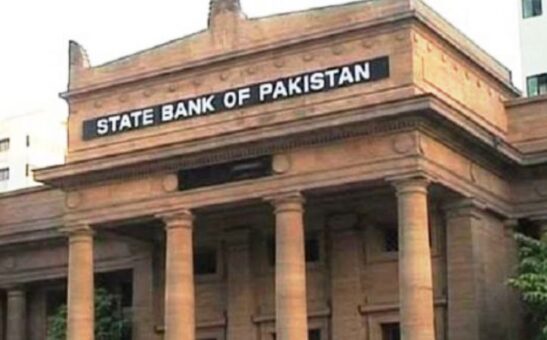KARACHI: State Bank of Pakistan (SBP) on Monday said that the asset quality of banking sector weakened owing to Rs88.3 billion or 13 percent increase in Non-Performing Loans (NPLs).
In its Mid-Year Performance Review of the Banking Sector (January – June 2019), the SBP said that the asset quality of the banking sector weakened during first half (January – June) 2019 H1CY19, breaking away from the declining trend in recent past.
“The infection ratio (NPLs to Total Gross Loans) increased to 8.8 percent by the end of H1CY19 (8.0 percent by end H2CY18).”
This was mainly due to an increase of Rs88.3 billion (or 13.0 percent) in NPLs during H1CY19.
As a result, the NPLs stood at Rs768 billion by end June 2019. The fresh rise in domestic NPLs was mostly concentrated in few local private banks as well as in a specialized bank, the SBP said.
Consequently, the infection ratio for local private banks and specialized banks increased to 7.0 percent (6.2 percent by end of H2CY18) and 43.2 percent (32.9 percent by end of H2CY18).
With the tightening of macroeconomic conditions in CY18 and later, inflow of fresh NPLs have been on the rise.
However, in terms of economic sectors, the higher defaults during H1CY19 were restricted to the energy and agribusiness sectors.
Energy sector contributed 52.8 percent to the total increase in NPLs during H1CY19, while agribusiness contributed 18.6 percent. Most of the NPLs in the energy sector (96.8 percent) pertained to the public sector entities associated with electricity generation and transmission that faced constrained cash flows (due to circular debt/low recoveries).
In case of Agribusiness, however, an element of seasonality exists in the classified loans as they peak around second quarter of each calendar year but then recede in subsequent quarters.
Besides this seasonal phenomenon, other factors responsible for the rise in NPLs included late start of sugar crushing season, water shortage and drought conditions affecting crop yields, and delay in sale of the newly harvested kharif crops by farmers hindering their repayment capacity (Rice, Cotton and others) etc.
Furthermore, 20.8 percent contribution to the growth in NPLs came from banks’ overseas operations, largely related to operations in the Middle East.
In addition to Pak Rupee depreciation, the economic slowdown in some of these countries could be the reason for the higher NPLs.
The surge in NPLs was mainly driven by the NPLs of public entities in the energy sector, which do not require provisions.
Resultantly, the provision coverage ratio (78.4 percent in H1CY19 against 83.8 percent in H2CY18) declined.
As a result, the net NPLs increased and net NPLs to capital ratio jumped to 11.5 percent as of end H1CY19 against 7.8 percent as of end H2CY18.
However, it may be kept in perspective that in the aftermath of growing NPLs banks made net provisions to the tune of Rs26.40 billion during H1CY19 compared to Rs36.2 billion during CY18.
The fund-based liquidity of the banking sector remained comfortable, despite continued moderation in liquidity ratios.
Liquid assets to total assets ratio moderated to 48.0 percent by end June 2019 (48.7 percent by Dec- 18).
Similarly, liquid assets to total deposits (excluding customer fixed deposits) also moderated to 81.8 percent in H1CY19 (85.0 percent in Dec-18) mainly due to higher proportionate rise in deposits.
However, due to improved growth in fixed deposits, liquid assets to short term liabilities ratio improved to 95.6 percent (94.9 percent in Dec-18) percent over the comparable period of last year.
Islamic Banking Institutions (IBIs) continued to augment the overall profitability of the banking sector as it contributed 26.5 percent to the overall after-tax profits during H1CY19, despite 14.4 percent share in total banking sector assets.
The earnings ratios, which were on downtrend for last few years, improved during the half year under review Return on Equity after-tax inched up to 11.4 percent in Jun-19 from 10.7 percent in Dec- 18, while ROA improved to 0.84 percent from 0.81 percent The turnaround in profitability indicators, after three consecutive years of downturn, was primarily enabled by rising interest rates over the last year or so.
